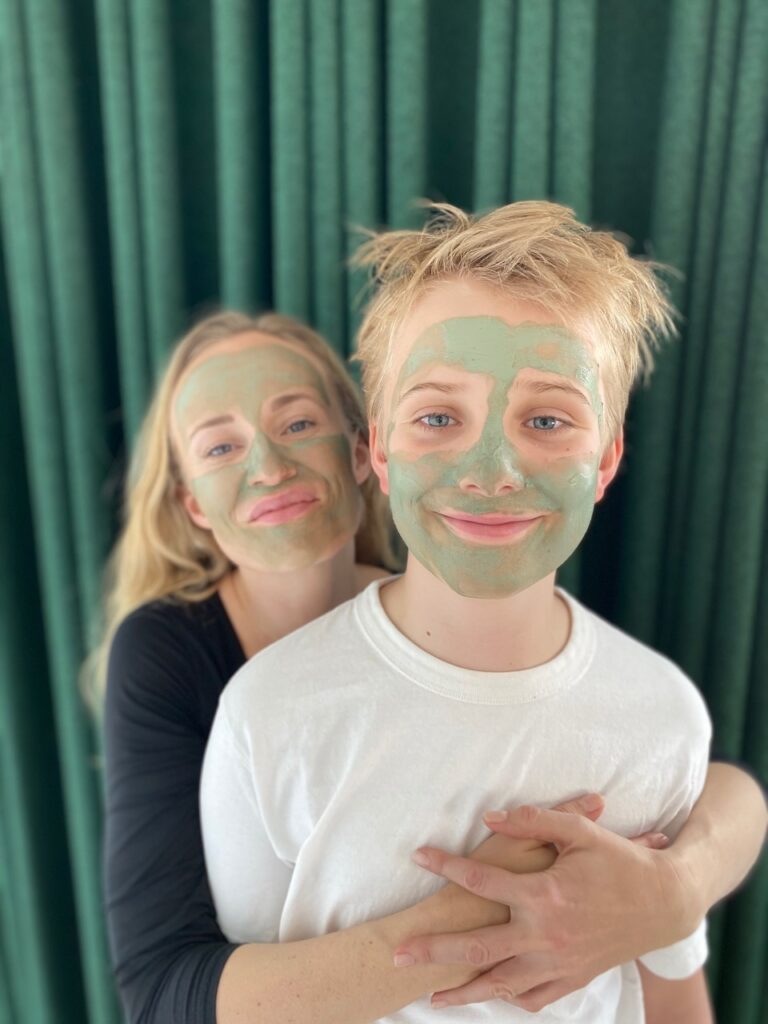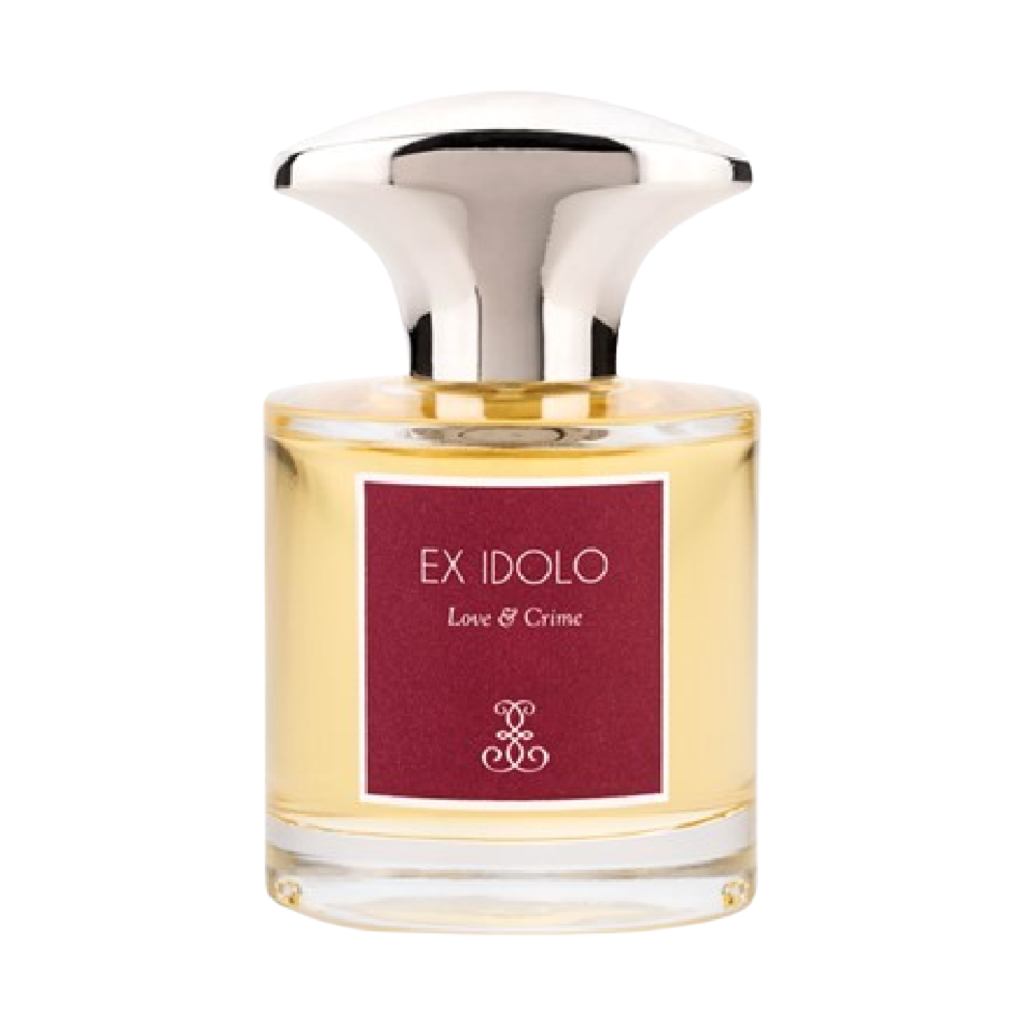ERIS Parfums has become an unlikely trailblazer in the world of fragrance. Founded by author, collector and perfume expert Barbara Herman, the brand’s uncompromising compositions are inspired by the rarefied spirit and ingredients of vintage perfume. However, as Barbara says, they are anything but ‘retro’. Avoiding dusty nostalgia, each scent smells exciting, vibrant, and bracingly new.
Etiket’s Director of Fragrance David Bernstein chatted with Barbara about how she manages this balancing act as ERIS’ Creative Director. Their conversation touched on her collaboration with star perfumer Antoine Lie, her artistic inspirations, and what sets her fragrances apart.
David Bernstein: You started your perfume journey collecting vintage perfume. What was it about that world that attracted you?
Barbara Herman: When I began delving into vintage perfume, I was taken by the complexity, sophistication, daring, overt eroticism, and sometimes gender-bending nature of many of the fragrances. The balance of high-quality natural ingredients with synthetics was there, too, even in some drug-store brands.
You could tell those fragrances took a while to create. They had a story to tell, and they took you on an unpredictable journey. Each was a little universe of its own, unlike any other. And since there were not a bazillion perfume releases in a year as there are now (sometimes from the same brand!) each new perfume was an event. This was before the so-called age of “industrial” perfumery, which began around the 1990s.
DB: What do you think these fragrances offered the wearer that typical contemporary fragrances don’t, or can’t?
BH: I think it’s important to distinguish mainstream fragrances from niche fragrances — and real niche from ‘faux niche’. What the best vintage perfumery — and truly niche perfume brands — offer is the pure vision of the perfumer and/or creative director, along with an attention to the quality of ingredients.
So many mainstream brands now are chasing after what has sold well, or what market research has revealed is popular. It’s as if much of what’s on the market now has been placed there by an algorithm. That’s why real niche perfumery is where the less predictable perfumes are coming from. Don’t get me wrong — there are some major brands whose scents I love that don’t follow this formula, and some niche brands that are formulaic.
Ultimately, perfumers and creators in ‘true niche’ perfumery are doing their own thing. And you can smell the difference, the creativity, and sometimes, the quality of the ingredients. That model is closer to the one which produced the vintage perfumes I love.
DB: How have you achieved that “true niche” quality and creativity with ERIS?
BH: The ideas I have for perfumes are undiluted by marketing team interventions or cost-cutting, profit-maximizing measures. The ingredient story, the personality, the emotional impact I want, are all directly realized through Antoine Lie’s incredible compositions. If people think ERIS fragrances are quirkily intriguing and smell amazing — it’s all I could hope for.
And since Antoine became an independent perfumer in 2019, he is now working with smaller, more luxurious perfume labs such as Atelier Fragranze Milano and L’Atelier Français des Matières in Annecy, France. These labs provide ingredients like the in-house tinctured, authentic ambergris and the luxe cacao in “Mxxx.”, as well as the French immortelle in “Scorpio Rising”. We have access to the kinds of ingredients that just would not be possible to use on a mass scale.
In the case of the animalic ingredients which I discovered in vintage perfumery — like civet, castoreum, or deer musk — it’s usually not ethical to use the real stuff, because of the suffering and harm caused to the animals those ingredients come from. This is not something I lament the loss of, but I did fall in love with that category of vintage perfume for the warmth, depth, and mystery they provided. So ERIS’ fragrance “Mxxx.” does use a couple real animalic ingredients (ambergris and hyraceum) that are naturally expelled from animals, so sperm whales and hyraxes are not harmed or disturbed in any way. In the case of ambergris, it’s so expensive that only a tiny percentage of brands are using the real stuff anyway.
DB: ERIS is named for the Greek goddess of troublemaking and disruption. What do you consider disruptive or troublemaking about ERIS perfumes? And what is the one ERIS fragrance which exemplifies this the most?
BH: Fragrances are like faces. Some have a symmetrical, conventional beauty that is pleasing but easily forgettable. And then there’s the interesting kind, with something off or unusual about them that memorably intrigues you.
I love wild fragrances that get lodged in your memory, usually because of some odd, extreme, or over-the-top quality. It could be an unusual or overdosed ingredient or a disturbing (unconsciously or subliminally) but sexy animalic quality. Something that stands out perhaps as disturbing at first can be addictive later, like an acquired taste. Children, for example, don’t tend to eat raw oysters, bitter vegetables, or stinky cheeses. But adults realize that the acquired taste is often the most satisfying one.
Each ERIS fragrance offers olfactive qualities more mainstream fragrances would want to edit out. But probably the most representative of troublemaking or disruption is “Ma Bête”, part of the Beauty and the Beast trio from 2016.
If you’re looking for a fragrance you can wear to work or in a casual setting without causing a “disturbance in the Force” (to quote Obi-Wan Kenobi), “Ma Bête” is not it. It’s overdosed with animalic notes (redolent of intimate moments, shall we say) entwined with indolic florals and intense spices and resins. It’s the anti-Office Scent, the anti-clean scent. And people either love it or hate it, sometimes both at once! If you want to cause trouble, or get into some trouble on a night out, “Ma Bête” is perfect. I’ve never not had an ‘interesting’ night out when wearing “Ma Bête”, let’s put it that way!
DB: How did you start collaborating with perfumer Antoine Lie? Why did you choose him specifically?
BH: I’d admired Antoine’s creations for a while before I had the idea of creating a brand. He was one of the perfumers I interviewed for the “Scent Visionaries” chapter of my book, Scent and Subversion: Decoding a Century of Provocative Perfume (Lyons Press: 2013). I spoke to him about how he translated the perfume brief for Etat Libre d’Orange’s notorious “Sécrétions Magnifiques”.
I love the daring and emotionality of his work, its ability to be rooted in classical perfumery while taking off into wild, uncharted territory. At the same time, his work is beautiful and never just weird for its own sake. After the book came out, I approached him about working with me and he said yes!
DB: My understanding of vintage perfumery is that it was heavily divided along gender lines. Am I correct in this assumption?
BH: What’s interesting is that even within gender marketing in vintage perfumery, there was no fixed or stable sense of what ‘masculine’ or ‘feminine’ was supposed to smell like. That was the big revelation which inspired my book Scent and Subversion.
Some of the most popular perfumes of the 1920s, 1930s, and 1940s which were marketed to women, for example, are what now would be considered ‘masculine’ – leather, tobacco, and animalic or ‘dirty’ perfumes. And although Guerlain’s landmark “Jicky” was made for women, men loved it and wore it. I loved finding out, for example, that Marlon Brando’s signature scent was “Vent Vert” and Keith Richards wears Jean Patou’s “Joy” under his armpits — both floral scents marketed to women.
Scent allows you to subvert gender boundaries without the kind of social penalties you might get with fashion choices. In high school, I wore the men’s fragrance “Grey Flannel” not to be an edge lord, but because I liked it! And unlike the forbidden items I wore that violated my school’s dress code, no one tried to stop me from wearing men’s cologne! Much of the world may still balk at gender fluidity in fashion, but for most perfume lovers, wearing what you like takes precedence over rigid binary gender rules.
As I write in Scent and Subversion,
“[C]ycles of taste [in perfume] mirror the arbitrary and ever-shifting role of gender in perfume – the idea that certain scents are either masculine or feminine. If men wore violet perfumes in the nineteenth century and women wore tobacco and leather perfumes in the 1930s – styles whose ‘gender’ has since been reversed – this seems like more proof in perfume form that gender, like perfume, is fluid, culturally constructed, and wearable in multiple forms on variable bodies.”
DB: Is this why you were driven to create two genderfluid perfumes (Mx. and Mxxx.) which deliberately evade gendered associations?
BH: “Mx.” (2017) and “Mxxx.” (2019) explicitly pay homage to a gender revolution that was really taking hold around 2015. That was the year ‘Mx.’ (pronounced ‘mix’), the gender-neutral title which replaces ‘Mr.’, ‘Ms.’ And ‘Mrs.’, entered the Oxford English Dictionary.
Both of those fragrances play with the idea of gender fluidity by being both for men and women and neither for men nor women. I loved the idea that the “Charlie” perfume in the 1970s celebrated a political movement — the Women’s Movement — and I wanted to do something similar for the intense re-thinking of binary gender that was (and is) taking place.
DB: Who from the world of perfume do you most admire, either from the past or the present?
BH: Germaine Cellier, Edmond Roudnitska, and Bernard Chant come to mind first, but there are so many. And I admire many contemporary perfumers as well. Perfume is such an interesting art and it’s evolving.
DB: And what about from the world outside of perfume?
BH: I admire artists who take risks to create their vision — Lynn Ramsay, Chantal Akerman, Kara Walker, Amy Winehouse, Diane Arbus, Nan Goldin, Cat Power, Lydia Davis, Ocean Vuong, John Fahey, Terrence Malick, and so many others. I admire journalists and activists who take risks to expose and right wrongs. And I admire everyday people who survive through tough things.
Discover and shop ERIS Parfums on Etiket.ca!


































